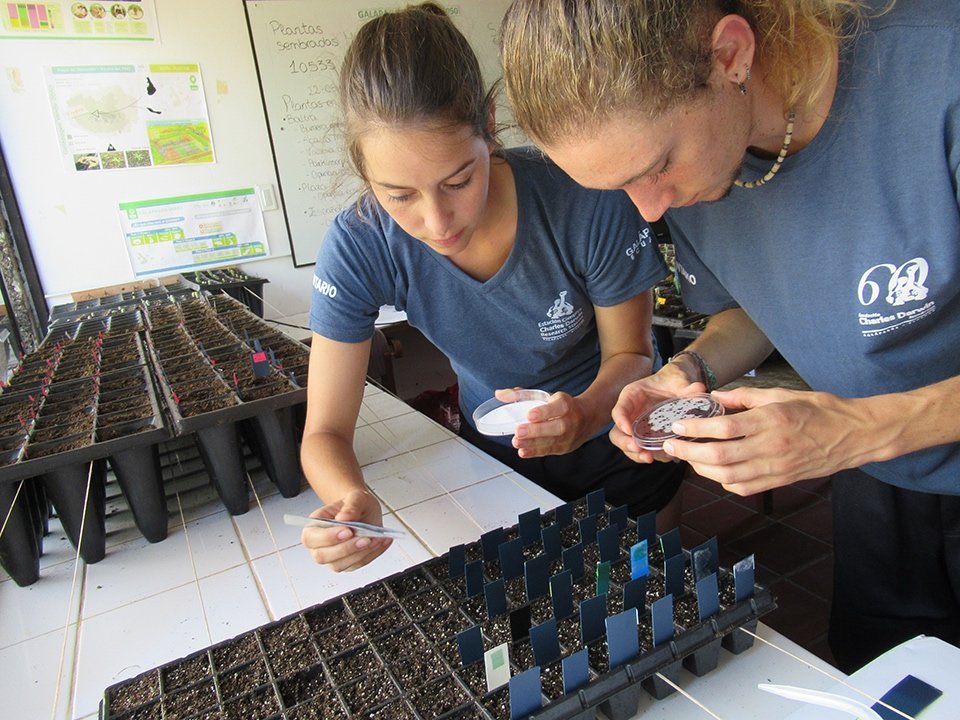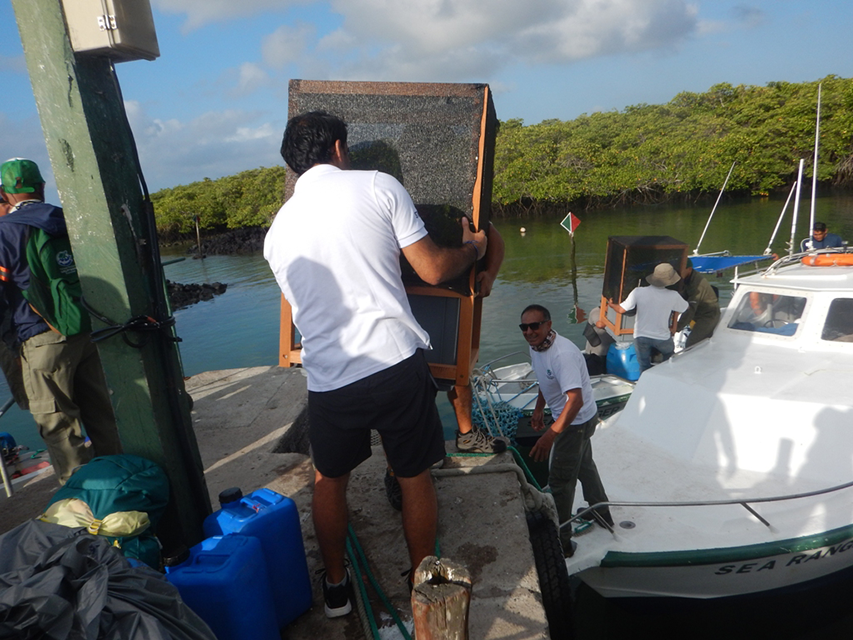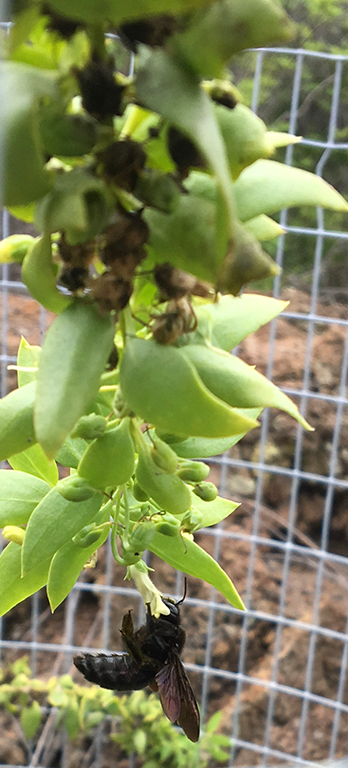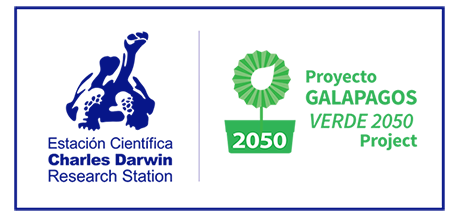
Author: Esme Plunkett
Today, it is believed species go extinct across the globe without their existence having ever been discovered (Lees & Pimm, 2015). This could have easily been the story of Galvezia leucantha var. leucantha, whose population was discovered in 1967 (Wiggins, 1968; Jaramillo et al., 2018). However less than 50 years later had been reduced to only four individual plants in the world (Jaramillo & Tye, 2018). Patricia Jaramillo Díaz, current leader of the Galapagos Verde 2050 (GV2050) project, embarked on an expedition in search for Galapagos’ endangered plant species in 2012. She arrived to Playa Tortuga Negra together with other botanists and park rangers in northern Isabela to find the last remaining individuals and was determined to make a change.


What caused this massive population decline? Species introduced by humans to Galapagos Islands such as goats, cats and rats (Guzmán et al., 2016). These animals have over-fed on the evergreen leaves of G. leucantha in an area surrounded by other flora that often dries during the drought seasons. Although goats have since been eradicated, they caused large-scale destruction and are one the principle causes of plant species extinction in Galapagos (Cruz et al., 2019).
The GV2050 project of the Charles Darwin Foundation (CDF) began working to reverse this drastic population reduction in 2016 and has thus far repatriated 19 individuals of G. leucantha, overall quintupling the population.
The work behind this repatriation has been extensive. With such a small population size, the G. leucantha population experiences a ‘genetic bottleneck’, meaning that the population has low genetic variation and thus, lowers its robustness (Keller & Waller, 2002). In 2016, only 1% of the seeds collected from the field were viable for germination. With this small sample of viable seeds, germination tests were carried out to find the best method possible to germinate new plants. From the first round of trials, nine seedling plants were germinated and transplanted, and of these nine, only five grew into healthy young new plants. So from thousands of collected seeds, five healthy individuals were produced to be repatriated.
In the Charles Darwin Research Station (CDRS) laboratories, the GV2050 team have to provide daily care and maintenance for each new cohort of plants; many of the team describe the experience like becoming first-time mothers! I had personally never been so attentive to only five individual plants, but knowing that those five represented 20% of the global population, it was a responsibility not be taken lightly. Much of this laborious work is carried out by the national and international volunteers received by the project each year.


In the first few weeks of February 2020, the five individuals grown in laboratory produced their first flowers. This was their way of telling us that it was time for them to be taken home. Before transporting them, the plants must go through a rigorous quarantine process. The accidental transportation of organic material with such critically endangered plants and to an ecologically fragile ecosystem could have disastrous consequences. For this, the Galapagos Biosecurity Agency (ABG) use infrared cameras and electric vacuum technology to revise the plants and ensure the absence of organisms within the plants, and structures were constructed to protect the plant in transportation and avoid contamination with all outside specimens until they arrive to their habitat on Isabela Island. Specific substrate is even used to avoid contamination and transportation of even the smallest creatures (Jaramillo et al., 2017).
This was the third repatriation trip GV2050 has carried out since they began working with G. leucantha on Isabela in 2016. As per the GV2050 Action Plan, in collaboration with the Galapagos National Park Directorate (DPNG), the five new individuals were to be planted in an area called Playa Tortuga Negra in northern Isabela Island. Some individuals were planted in close proximity to a Groasis Waterboxx, a technology that stores and feeds water to the plant, along with individuals planted with another water-saving technology hydrogel and control plants without technologies (Jaramillo et al., 2017).


Thanks to the support of the National Geographic Lindblad Endeavour II cruise ship, we were able to travel to northern Isabela to repatriate the five new plants. Landing on Playa Tortuga Negra, to be greeted by endemic flightless cormorants and getting to work on the Galvezia plants was a reminder to the uniqueness of the Galapagos diversity, and the importance of its conservation. To our delight, the 18 individuals previously repatriated to the study site were all healthy, flowering and producing fruits. This is a huge success for the CDF and its GV2050 project, as well as the DPNG and the ABG. Despite the assiduous laboratorial work and the naturally slow process of ecological restoration, to have 18 thriving green individuals is an accomplishment that that is not only directly saving the species from extinction, but also safeguarding the ecological integrity of the surrounding area.
After monitoring the established plants, we spent the afternoon planting the new individuals and installing the water-saving technology to supply them with extra water. Later, with the help of Galapagos National Park ranger Diana Gil, we collected thousands of seeds to take back to CDRS and begin germination trials again. As Wiggins did in 1967, and Charles Darwin before him in 1835, we collected samples from the surrounding area to be identified and added to the CDF Herbarium.


However, the trip highlight was the somewhat accidental discovery of three naturally occurring adult Galvezia plants on the outskirts of our study site, all producing fruit and flowers! We cleared the surrounding overgrowth, watered them with hydrogel and took data from them. Galvezia leucantha var. leucantha is adapted to short distance dispersal, and its flowers adapted for insect pollination (Guzman et al., 2016). Therefore, these three naturally reproduced individuals could be the result of this ecological restoration initiated by our project, a process that has created a healthy population of individuals that are interacting with endemic pollinators such as Xylocopa darwinii. Not only this, for us it means another three individuals to collect seeds and data from, and of course brings to the total population size to 26 individuals! This is a result to be celebrated by GV2050 and the DPNG, and brings the species one step further from extinction.



As botanists, it is sometimes difficult to convey the urgency to conserve plants, as they are something, people are constantly surrounded by. However, the story of our Galvezias, and many other plants like them, is one that has been able to touch the heart of any green-thumbed person. It was a delight to tell its story on board the Endeavour II and have all the passengers and crew respond with such interest and concern.
Although the story of Galvezia is on its way to a happy ending, it is still a sad reminder on how far-reaching human impacts can be. To this day, it still baffles me that areas, so untouched by humans can be so damaged by their actions. Species should not have to depend on humans to survive on this earth, but unfortunately, humans have made more of an impact on the planet than we have even begun to realize. I feel privileged to be a part of the project that is not letting yet another unique species fall away silently.


GV2050 project is implemented in collaboration with the Charles Darwin Foundation and Galapagos National Park Directorate. The project is financially viable thanks to the support of the COmON Foundation and Green Fund of Japan. We would like to thank National Geographic Lindblad for their generous support in our work, and to the CDF team most notably Maria Jose Barragan, Isabel Grijalva and Patricia Jaramillo Díaz for their input on earlier drafts This is just one of seven islands where the GV2050 project has implemented restoration work, you can read more about some of our results of the endemic Opuntia species restoration here: https://peerj.com/articles/8156/.

References
Cruz, F., Carrión, V., Campbell, K. J., Lavoie, C., & Donlan, C. J. (2009). Bio-economics of large-scale eradication of feral goats from Santiago Island, Galapagos. Journal of Wildlife Management, 73(2), 191 -200.
Guzmán, B., Heleno, R., Nogales, M., Simbaña, W., Traveset, A., & Vargas, P. (2016). Evolutionary history of the endangered shrub snapdragon (Galvezia leucantha) of the Galapagos Islands. Diversity and Distributions, 1-14.
Jaramillo, P., Tapia, W., & Gibbs, J. (2017). Action Plan for the Ecological Restoration of Baltra and Plaza Sur Islands. 2, 1-29.
Jaramillo, P., Guézou, A., Mauchamp, A. & Tye, A. (2018). CDF Checklist of Galapagos Flowering Plants. Charles Darwin Research Station Natural History Collections. Puerto Ayora, Galapagos.
Jaramillo, P. & Tye, A. (2018). “Galvezia leucantha”. Fundación Charles Darwin (FCD) y WWF-Ecuador. (2018). Atlas de Galápagos, Ecuador: Especies Nativas e Invasoras. Quito, FCD y WWF-Ecuador: 64-65.
Keller, L., & Waller, M. (2002). Inbreeding effects in wild populations. Trends In Ecology & Evolution, 17(5), 230-241.
Lees, A., & Pimm, S. (2015). Species, extinct before we know them?. Current Biology, 25(5), R177-R180.
Wiggins, I. (1968). A new species and subspecies of Galvezia (Scrophulariaceae) from the Galápagos Islands. Occasional Papers of the California Academy of Sciences. (65), 1-7.




